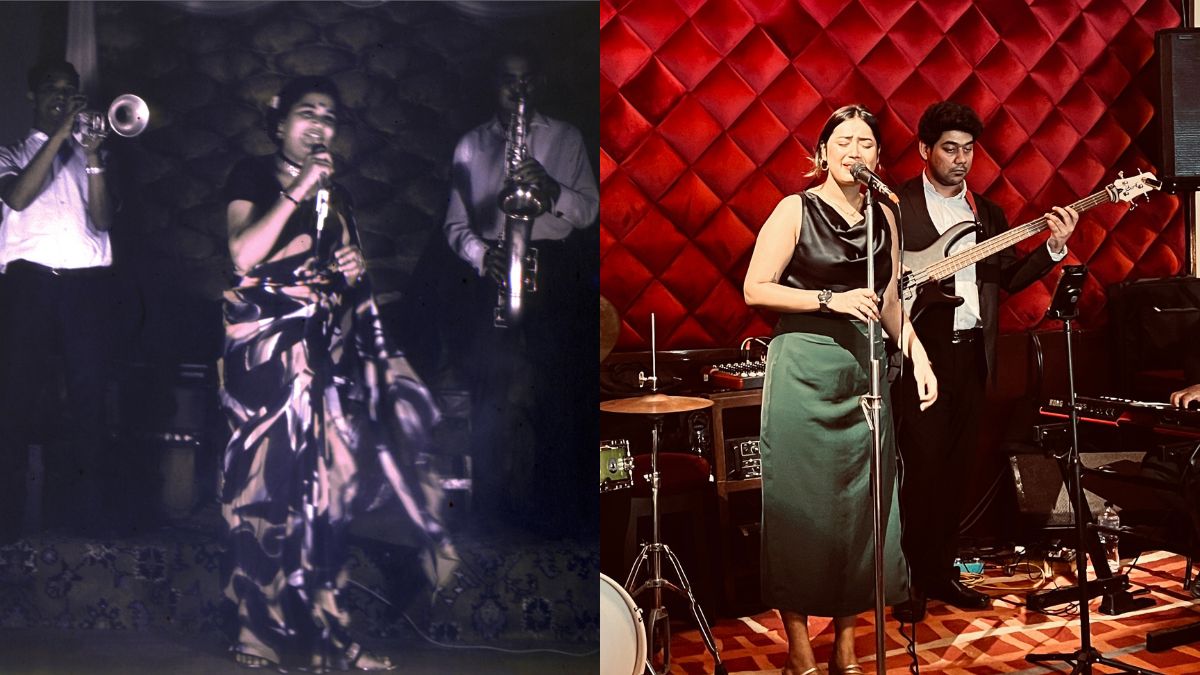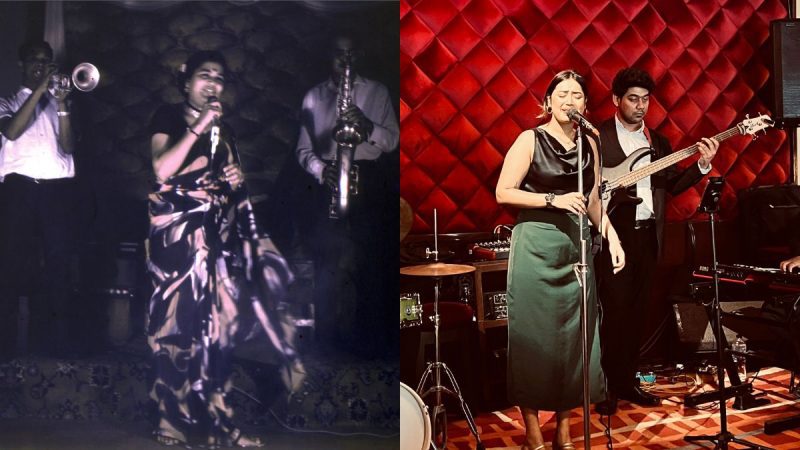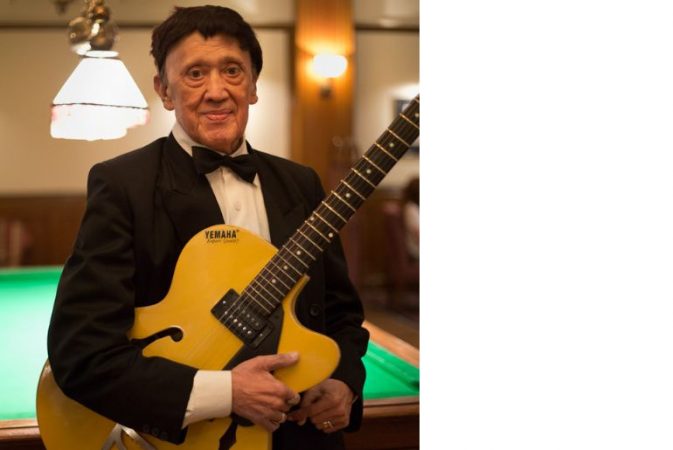If you have seen the documentary, ‘Finding Carlton’, it puts you into the group who are aware of the broader narrative of jazz in India. The documentary traces the roots of this music, from its early beginnings in the cosmopolitan port cities of Bombay and Calcutta. Precisely in Calcutta, there used to be a vibrant jazz scene that once thrived in the iconic venues. “At the height of the jazz scene in Calcutta in the 1960s and early 70s, the feeling was one of suaveness with an underlying buzz of excitement. This was a city with a lot of talent, plentiful venues and a crowd that appreciated both. There was always something happening somewhere,” reminisces Anand Puri, co-owner of Trincas, one of Kolkata’s iconic jazz venues.
Echoes Of Jazz In Calcutta
If there’s a conversation about the rise of Jazz music in Calcutta, Carlton Kitto is a central figure. Kitto with his virtuoso guitar skills and charismatic stage presence enchanted audiences and inspired a generation of musicians. Calcutta has always been a melting pot of cultures and artistic expressions. It was no surprise then, that the sultry rhythms and improvisations of jazz found a home here. The early 20th century witnessed a burgeoning interest in jazz music, fueled by the arrival of American jazz musicians and the influence of British colonialism.
“It’s hard to pinpoint the earliest start of jazz in Calcutta as the genre has existed in India for almost 100 years (1920s/30s) and those with an accurate living memory of urban popular culture are extremely rare treasure troves. It is known, however, that coloured Jazz musicians would tour the world to escape racial prejudices in their home countries. Their art form rubbed off on locals wherever they went, and India was no less. Calcutta and Bombay in particular gleaned a lot from Western Jazz influences in the 1930s and 1940s,” agrees Puri.
View this post on Instagram
As the decades rolled by, Calcutta’s jazz culture flourished. The city became a haven for jazz aficionados, with clubs and cafes springing up across its vibrant neighbourhoods. “Towards the middle of the last century, Park Street and Chowringhee (road) were home to some of the best restaurants and entertainment establishments in the country. The idea of combining food and entertainment had travelled from Europe, particularly the templates of grand ballrooms with classical music and smaller, more alternate Parisian jazz clubs,” he informs.
Artists from diverse backgrounds found common ground on the jazz stage. In an interview with the NY Times, Finding Carlton’s filmmaker Susheel Kurien says that Calcutta was like Las Vegas, a part of the country’s culture, that has been lost in transition rather than translation.
Those Enchanting Evenings…
Puri begins, “There were a few significant places with larger bands that included vocalists and where the music took centre stage. These included The Grand Hotel, Blue Fox (with Louis Banks and Pam Craine) and Trincas (with Benny Rozario and his boys and successively Eve, Usha Iyer (Uthup) and Jenny on vocals). Jazz continued into the 1980s at the Polynesia nightclub at the Grand Hotel and finally, ended in the 2000s with small 2 or 3-piece bands that played in the corner of 5-star dining rooms.”
Back then, as the night wears on, the spirit of jazz permeates every corner of Calcutta. Amidst the clinking of glasses and the slow sway of dance, patrons made their way to their favourite jazz haunts. And the city of joy’s vibrant jazz culture came alive with an infectious energy.
“Imagine rooms filled with well-dressed patrons, cigarette smoke in the air, the smell of sizzlers and whisky and perfume…music would swell and fill the room, punctuated by the clink of ice in glasses from silver ice-buckets,” he describes. “Restaurants on Park Street formed the epicentre of this scene and people hopped from one spot to the next – perhaps a pre-theatre drink at Moulin Rouge, followed by a return to Park Street post theatre and dinner at Trincas listening to Benny Rozario, followed by post-dinner drinks at Blue Fox with Louis Banks.”
Trincas traces its origins back to 1964. From its earliest days, the place was synonymous with jazz, hosting some of the most renowned musicians of the time. Even now, Trincas is popular, even on Mondays, and how wonderful it is to hear live Hindi and Bengali music performed in a traditional setting. It’s a perfect way to celebrate with family and friends or on a date.
“From 1959 – 1960s, at Trincas, we have a well-preserved vintage card that announces ‘Chris Perry and his orchestra and the enchanting Molly’. Chris Perry was a well-known Jazz Musician of the time. In the 1970s, there was Benny Rozario who was a top-notch jazz talent and the anchor of the band. They played smooth jazz and were accompanied at various times over the years by vocalists like the Iyer sisters (including Usha Iyer/Uthup) and Jenny. In 2021, Willie Walters’ Quartet restarted the jazz movement in Trincas, ” he explains.
Also Read: Housed In A 1920s Heritage House, This New Kolkata Coffee Shop Will Transport You To Old City
Does The Legacy Live On?
At the heart of the 1970s, Calcutta jazz was a burgeoning community of enthusiasts inspired by the sounds of bebop, fusion, and avant-garde jazz. During that time, Louis Banks and Pam Craine began to gain prominence at Blue Fox for their jazz-funk rendition. In the 1980s, the Polynesia nightclub at The Grand Hotel ruled the hearts with artist, Sonny Lobo. However, in the 1990s and 2000s, Jazz was reduced to background music in the nooks of five-star restaurants or limited to one-time appearances in the metropolis. As the echoes of saxophones and trumpets grew fainter, it begs the question: What led to the demise of this once-thriving community?
“Jazz goes hand in hand with a meal or a drink. As restaurants became less formal and more mass appeal, the model of F&B changed over the 80s, 90s, and 2000s. It can also be attributed to the less knowledge and availability of this form of music. As it became less mainstream in the West and bowed out to Pop music, this had a snowball effect and fewer people knew or wanted jazz music during that decline period,” he brings to notice.
Amidst the ebb and flow of cultural tides, Calcutta’s jazz scene is experiencing a revival. “Here, jazz started as a niche interest and then moved to wider appeal. The availability of enough venues and musicians and a clientele that could afford and appreciate both helped immensely. The city is associated with nostalgia and art and going against the grain. It is inherently suited to jazz which is a subculture, which is artistic and one that is not mainstream,” he expresses.
View this post on Instagram
Jazz enthusiasts are once again flocking to venues across the city. The quest of one of my friends searching for a jazz venue within the confines of a mere 24-hour visit to the city speaks volumes about the enduring significance of Calcutta’s jazz culture. He knew one thing straight: head to a prominent jazz club as soon as he completed work. In doing so, this reaffirms that in a world saturated with fleeting music trends, there’s a deep-seated appreciation for the art form, even today.
“Jazz is inherently cool. It has talent, attitude and flair. If you saw jazz in a video, you would want to be part of that scene!” Puri concludes. Perhaps, it is best summed up by the words of Louis Armstrong himself, who once said, “What we play is life.” And in Calcutta, where life pulses with a rhythm all its own, jazz will always have a home!
Cover image credits: Trincas
First Published: April 30, 2024 5:52 PM







